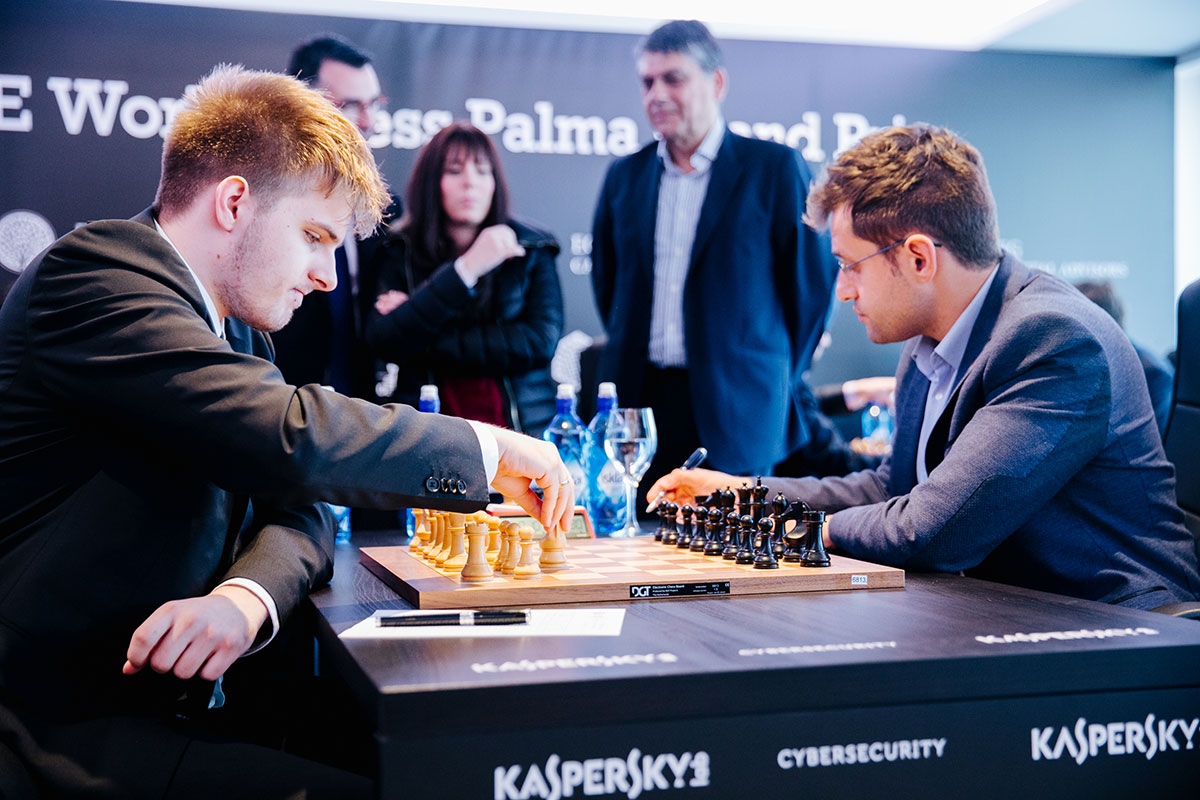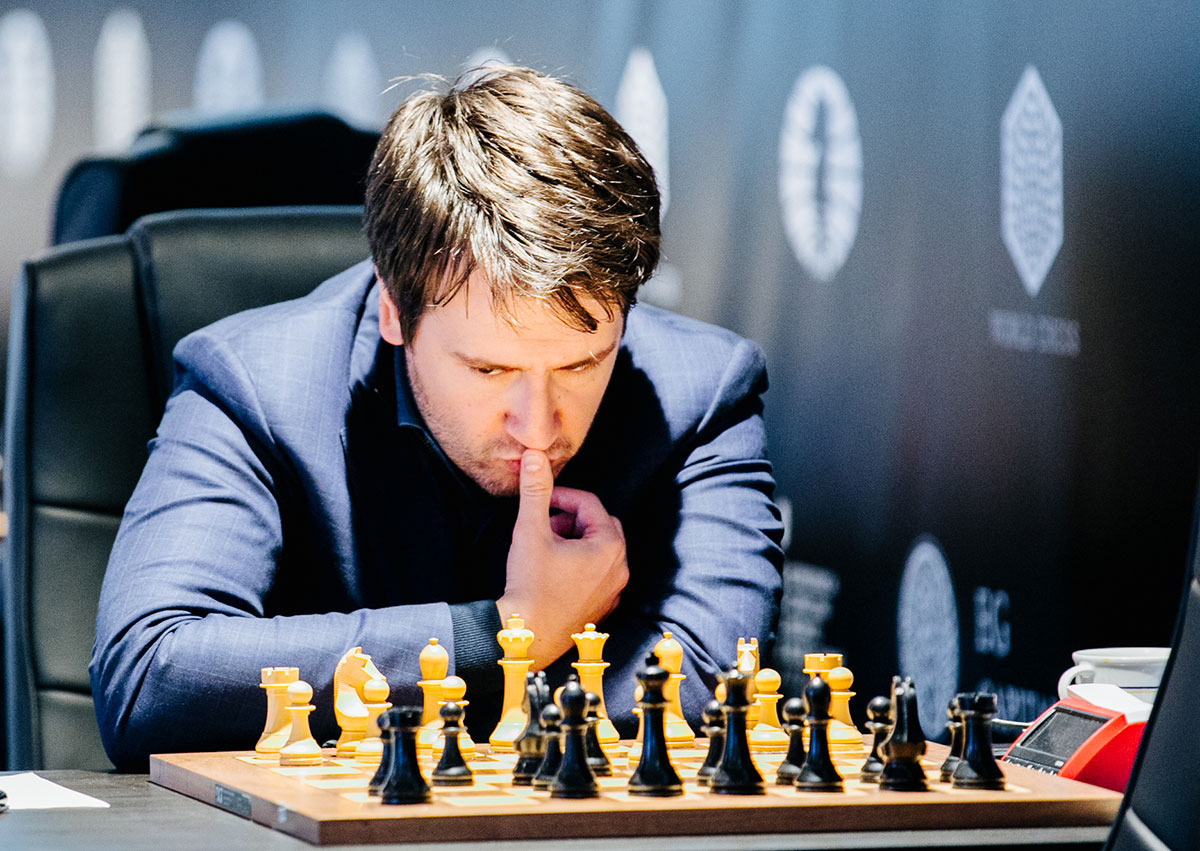


There is a saying in poker that it is great to be the no.10 player in world, except when the top nine are all playing at your table. In a sense, that is very much the tale of Palma for many of the players. Take a player like Vallejo Pons. The Spaniard is a great player in every sense of the word, with imagination and talent that are a pleasure to watch.

Top Spaniard Francisco Vallejo Pons | Photo: Valerij Belobeev
When he will play in the Florianopolis Open in Brazil in a couple of months, he will be the top seed by far and have a deserved red-carpet treatment, yet in a field such as Palma, he is not even in the top half. To be fair, this is a situation he is well acquainted with, having faced all the best in fields much tougher than this, and having been hardened by those experiences.

Richard Rapport gets ready for the ultimate challenge in Palma: facing in-form Levon Aronian | Photo: Valerij Belobeev
Richard Rapport is an immensely talented player with enormous reserves of creativity, that can be hit-or-miss depending on the level of his opposition. Against the likes of Levon Aronian, it was tough trying to rock the boat enough to have the Armenian frown. The game started well for the young Hungarian, and for a good long time he was fine, but things went badly and the leader gradually outplayed him into an ending that began to look decidedly dodgy for Rapport.
White just played 51.Nf6 with the obvious threat of Nd7+ winning the rook or the b6 pawn. Therefore if Black plays 51...Rxc4, White will equalize with Nd7+ and Nxb6. In the game, Black played 51...Ke7?, and after 52.Nd5+ Kd6 53. Rd1 Nxc4 54.Nxb6+, the danger was past and White was able to resume breathing.
However, instead Black could have played 51...Kg7! and because White suddenly has no checks, Black will indeed pick up a pawn with good winning chances. Ex: 52.Ne8+ Kh8 53. Rd1 Nxc4 and though Black will need to tread carefully after 54. Rd8 he has every reason to hope.

Teimour Radjabov has every reason to frown, but his persistence in pursuing the win against Li Chao allows him to still hope | Photo: Valerij Belobeev
After his loss to Tomashevsky in round six, setting up a truly desperate situation that many would argue was insurmountable, Teimour Radjabov struck back in round seven by outplaying Li Chao in a complex endgame out of sheer grit and determination. This only brings him to the 50% mark, meaning he absolutely needs to win his last two games to entertain hopes of qualifying for the Candidates, but nothing is written for some.
Black was done for and knew it, but had been trying his best to create as many swindle chances as he could. In this position, Black just played 24...Ne4 with threats of Nd2 mate, Qf2 mate, and Nxg3+, all with bad news for White. White had seen this in advance, and after 25. Qxg7+!! Black was forced to capitulate.
Finally, the player we had been waiting to score did so. Boris Gelfand overcame Alexander Riazantsev with Black to score his first win of the tournament. Enjoy the detailed instructive notes by GM Tiger Hillarp-Persson.
Alexander Riazantsev 0-1 Boris Gelfand (Annotated by GM Tiger Hillarp-Persson)

| Bo. | No. | Name | Pts. | Result | Pts. | Name | No. |
| 1 | 15 | Rapport Richard | 3½ | ½ - ½ | 4 | Aronian Levon | 1 |
| 2 | 2 | Vachier-Lagrave Maxime | 3½ | ½ - ½ | 3½ | Tomashevsky Evgeny | 14 |
| 3 | 5 | Svidler Peter | 3½ | ½ - ½ | 3½ | Nakamura Hikaru | 3 |
| 4 | 10 | Jakovenko Dmitry | 3½ | ½ - ½ | 3½ | Harikrishna P. | 9 |
| 5 | 4 | Ding Liren | 3½ | ½ - ½ | 3 | Giri Anish | 6 |
| 6 | 16 | Inarkiev Ernesto | 3 | ½ - ½ | 2½ | Vallejo Pons Francisco | 13 |
| 7 | 8 | Radjabov Teimour | 2½ | 1 - 0 | 2½ | Li Chao B | 7 |
| 8 | 12 | Eljanov Pavel | 2½ | 1 - 0 | 2 | Hammer Jon Ludvig | 18 |
| 9 | 17 | Riazantsev Alexander | 2½ | 0 - 1 | 1½ | Gelfand Boris | 11 |
| Rk. | Name | Rtg | Pts. | ||
| 1 |
|
GM | Aronian Levon | 2801 | 4,5 |
| 2 |
|
GM | Vachier-Lagrave Maxime | 2796 | 4,0 |
|
|
GM | Nakamura Hikaru | 2780 | 4,0 | |
|
|
GM | Ding Liren | 2774 | 4,0 | |
|
|
GM | Svidler Peter | 2763 | 4,0 | |
|
|
GM | Harikrishna P. | 2738 | 4,0 | |
|
|
GM | Jakovenko Dmitry | 2721 | 4,0 | |
|
|
GM | Tomashevsky Evgeny | 2702 | 4,0 | |
|
|
GM | Rapport Richard | 2692 | 4,0 | |
| 10 |
|
GM | Giri Anish | 2762 | 3,5 |
|
|
GM | Radjabov Teimour | 2741 | 3,5 | |
|
|
GM | Eljanov Pavel | 2707 | 3,5 | |
|
|
GM | Inarkiev Ernesto | 2683 | 3,5 | |
| 14 |
|
GM | Vallejo Pons Francisco | 2705 | 3,0 |
| 15 |
|
GM | Li Chao B | 2741 | 2,5 |
|
|
GM | Gelfand Boris | 2719 | 2,5 | |
|
|
GM | Riazantsev Alexander | 2651 | 2,5 | |
| 18 |
|
GM | Hammer Jon Ludvig | 2629 | 2,0 |